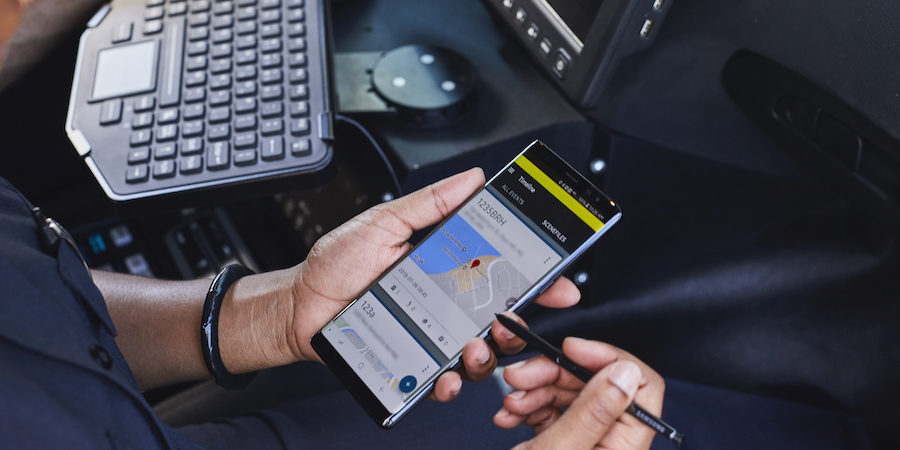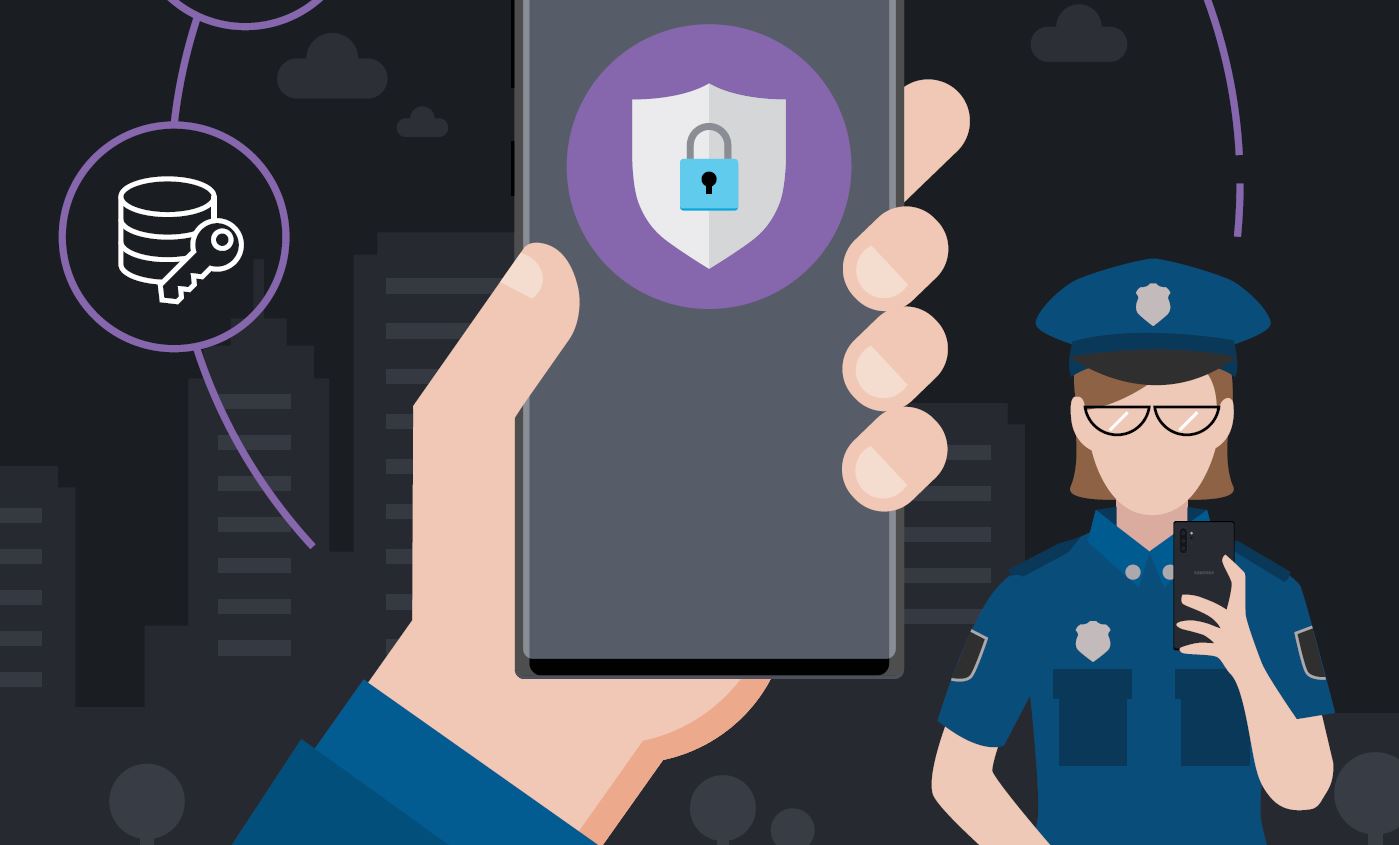There is a growing trend in policing driven by forward-thinking leaders who recognize the potential for a mobile-first approach — one in which officers can access mission-critical information regardless of their assignment or proximity to a vehicle.
Using smartphones to “untether” officers gives traditional vehicle patrols greater flexibility. Personnel on bike or foot patrol assignments, as well as motor and plainclothes details, can now have the same capabilities previously limited to those with access to a desktop or vehicle-mounted computer, wherever operations take them.
The power of Samsung DeX
A relatively new approach, introduced by Samsung DeX, marries a docked smartphone with a larger touchscreen and keyboard to provide a fully functional computer in the patrol car. If your computer-aided dispatch (CAD) vendor provides a mobile client for their product or you are using a cloud-based CAD, there’s a strong likelihood that DeX can perform for you.
Achieve Mobile CJIS Compliance at Your Agency
Get expert, practical advice for your mobile deployment so you can be both connected and compliant. Download Now
A full DeX transition can save a department a lot of money, as demonstrated in an in-depth Public Safety Network study. It’s important to note that DeX can also replace traditional desktops sitting in the report writing room and on detectives’ desks.
Planning for CJIS compliance
Smartphones provide an impressive level of utility simply with their base-level features. However, law enforcement operations generally require access to criminal justice information (CJI), and conventional in-vehicle computers are routinely used to run queries and check databases such as those maintained by the National Crime Information Center (NCIC).
Accordingly, if an agency intends to make a transition to smartphone-based computing and maintain full functionality for its users, officers will need to have the same level of access to CJI. This means that agencies will have to comply with the Criminal Justice Information Services (CJIS) Security Policy and follow any relevant protocols established by their respective state’s CJIS oversight and auditing entity, commonly known as a CJIS Systems Agency (CSA). Failure to comply can result in termination of access to databases that are essential to police operations.
The rules for CJIS compliance are complex — the latest CJIS policy is more than 250 pages long — and subject to a degree of interpretation by the state-level CSA. Following are some important considerations when considering mobile access to CJI.
Good news, challenging news
Smartphones with an Android operating system (OS) are considered by CJIS to have a limited-feature OS, which brings specific considerations. For example, a limited-feature OS means the device is inherently more resistant to certain types of network-based technical attacks than a full-feature OS.
However, the fact that a mobile device is being used also means that advanced authentication — also known as multifactor authentication (MFA) or two-factor authentication (2FA) — is required. That is not the case when a laptop computer is securely mounted within a police car.
Note that a computer that is dockable and can be removed from the car is subject to the same requirement for advanced authentication as a mobile device. If you’re already using a dockable system and the officers are using the computers outside the vehicles for CJI queries, then there should already be an established advanced authentication system in place, and you likely have much of the infrastructure that you need to make a transition to a smartphone-based system.
How to achieve mobile CJIS compliance
Start by determining the current use of CJI within your agency, and identify the person responsible for working with your state’s CSA. This is often the person managing your connection to NCIC and/or the periodically required CJI access training. If your agency is already conducting CJIS queries from devices outside of the building (for example, in-vehicle computers), it is quite likely that there is already a secure and encrypted “backhaul” which can be utilized by mobile devices.
You should also check with other agencies, approval authorities and your vendors to determine if any agencies in your region have a robust and successful smartphone program. It’s best to find an agency within your state, because there is some degree of subjectivity in determining CJIS compliance, and that determination is made at the state level.
When you find another agency that’s using mobile devices, ask if they have submitted an application to the state CSA and if they will share the document with you. Then have your advanced authentication and mobile device management (MDM) processes reviewed by your CSA before signing any vendor contracts, as the CSA will be responsible for ensuring compliance. Be wary of any vendors who claim to be CJIS-certified; there is no such certification. At best, vendors may have clients who have successfully complied with CJIS requirements, but this does not extend to a certification for the vendor.
Start with a small pilot group of selected participants who are supportive of going mobile and agree to provide feedback. Stress the importance of the project and the value of their input. A pilot group lets you address unexpected challenges on a smaller scale and permits corrections without major expense.
Once you have devices functioning in the field, you can scale up your deployment as funding permits. This can be coordinated with equipment that would be normally scheduled for replacement or during new vehicle installations. Doing so will save the cost of having to uninstall old equipment before installing the hardware relevant to your mobile program.
Go mobile to streamline operations
Today’s mobile devices can support a wide range of police operations, and the more officers can accomplish with a single device, the more effective they will be. Smartphones allow officers to work much more efficiently in the field, providing an unrivaled level of utility that will improve officer effectiveness and increase overall situational awareness.
Establishing a robust and effective CJIS-compliant smartphone program will provide a significant return on investment by allowing officers to have full access to mission-critical information, regardless of their assignment or proximity to a patrol vehicle.
Download our comprehensive CJIS compliance guide, which provides practical advice for agencies deploying smartphones and tablets. Not sure if mobile-first is right for your agency? Find out how much you can save with this free assessment.









